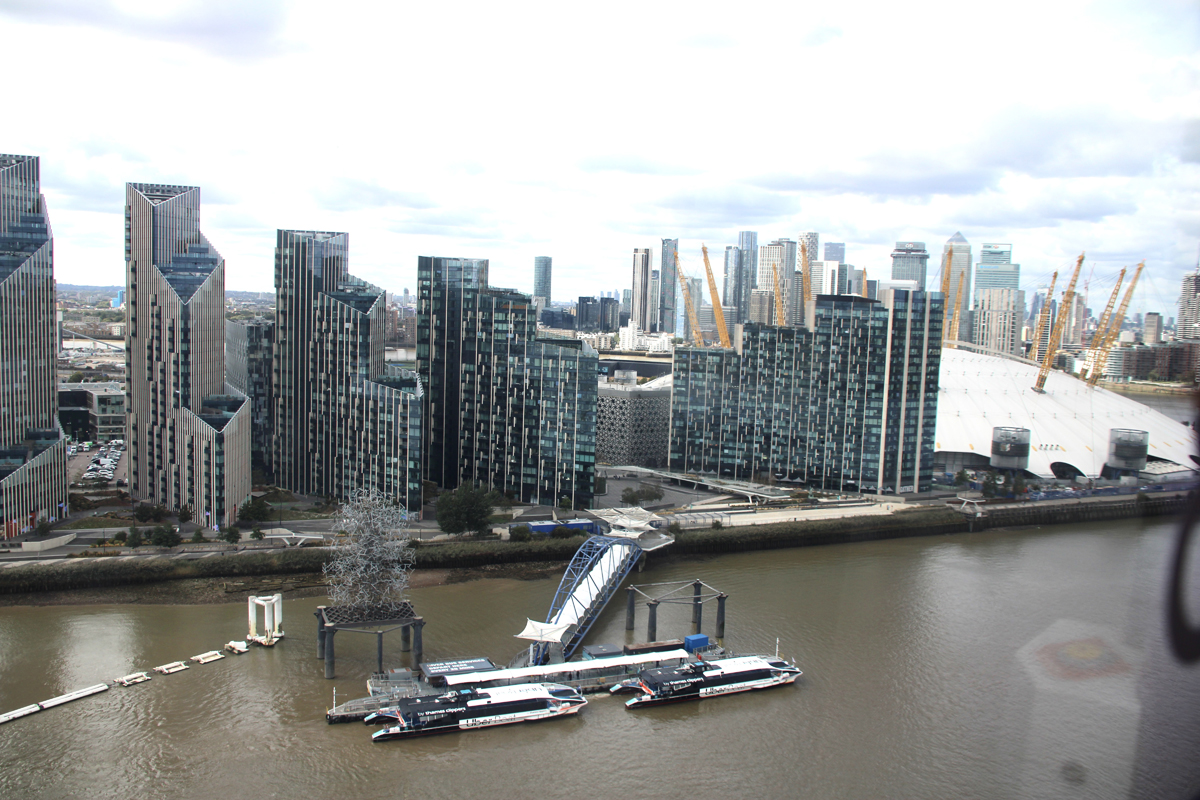
LONDON — Greetings from London, where I am preparing for my third international Trains Magazine/Special Interest Tours, following earlier trips to Germany and Switzerland. This one begins Sept. 23 and was scheduled to mark the bicentennial of modern railroading, which began in September 1825 with the first steam-powered train on the Stockton & Darlington Railway. We’ll actually be at the Stockton & Darlington the actual 200th anniversary date, which should be quite an event, as well as riding several other heritage railways.
As has been the case on prior trips, I’ll be writing about my adventures as much as time permits. This will probably not be every day (I’ve tried that before, and it’s a bit too much), but I’ll do my best.
Since the tour doesn’t begin for another week, you may wonder why I’m already in London. As has become my custom on these overseas trips, I come over early to pursue feature articles for the magazine, figuring that we should get maximum value from the visit. This time, I have two articles lined up, and tonight I’ll begin working on the first of those. I’ll be riding the highly regarded overnight Caledonian Sleeper from Euston station here in London to Fort William in the Scottish Highlands. I’ll then backtrack to Glasgow to interview some Caledonian Sleeper officials, and take another Caledonian Sleeper from Glasgow back to London. (Tough duty, I know, but someone has to do it.)
I’ve actually been in London for a couple of days, and did a little bit of general sightseeing (Big Ben, Buckingham Palace) and a lot of rail-centric activity. Today was quite an undertaking in that regard. Thanks to our European correspondent, Keith Fender, I met up with James Abbott, consulting editor for the British magazine Modern Railways, who was willing to share his expertise on a topic of interest. (I can’t really say more than that.) He generously turned what could have just a simple lunch meeting into an extensive tour of London-area rail transit. I don’t know how many miles we traveled, but we started at 9:30 a.m. and parted about 3:30 p.m. (although there was a rather lengthy lunch in there).
Along the way, we rode trains of intercity operator Southwestern Rail, the London Underground’s Bakerloo and Jubilee lines, the London Overground’s Lioness, Mildmay, and Windrush lines; the London Cable Car; Docklands Light Rail; Thameslink; and finally (for me) the Elizabeth Line. (If I missed anything, forgive me, James).
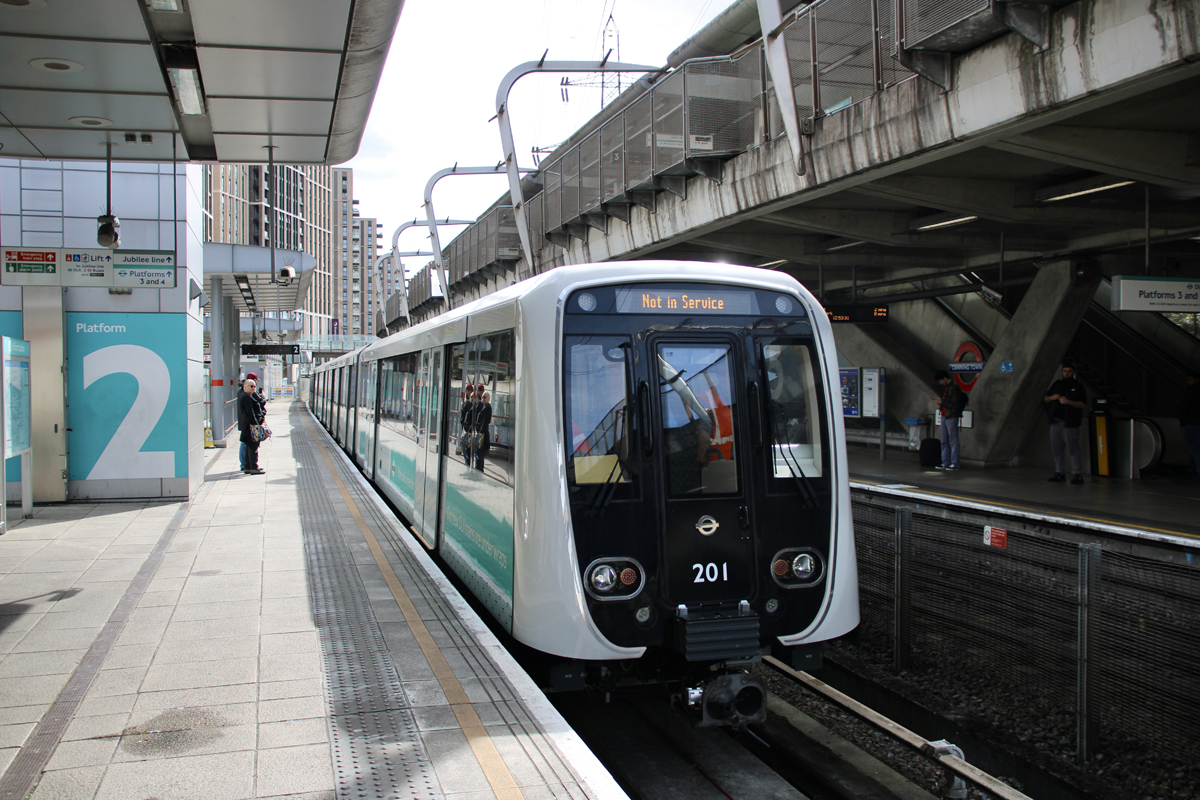
Among the notable highlights: an Underground mainline (the Bakerloo) that — believe it or not — runs through its maintenance shop, and a ride through the Thames Tunnel, built between 1825 and 1843 by Marc Brunel and his son Isambard Kingdom Brunel, a towering figure in English engineering. (The length of the project reflected both engineering and financial issues, according to this website. The tunnel — built for horse-and-carriage traffic but converted to rail use in 1869, was first of many tunnels under that river and the world’s first tunnel under a navigable waterway.
We maintained the rail theme for lunch, with a sandwich at the Dialogue Express Café in Stratford, a modest spot in a former railcar that employs the hearing-impared as a job-training and social works endeavor. Only open since July, it clearly is still looking to find its clientele; here’s hoping they do.
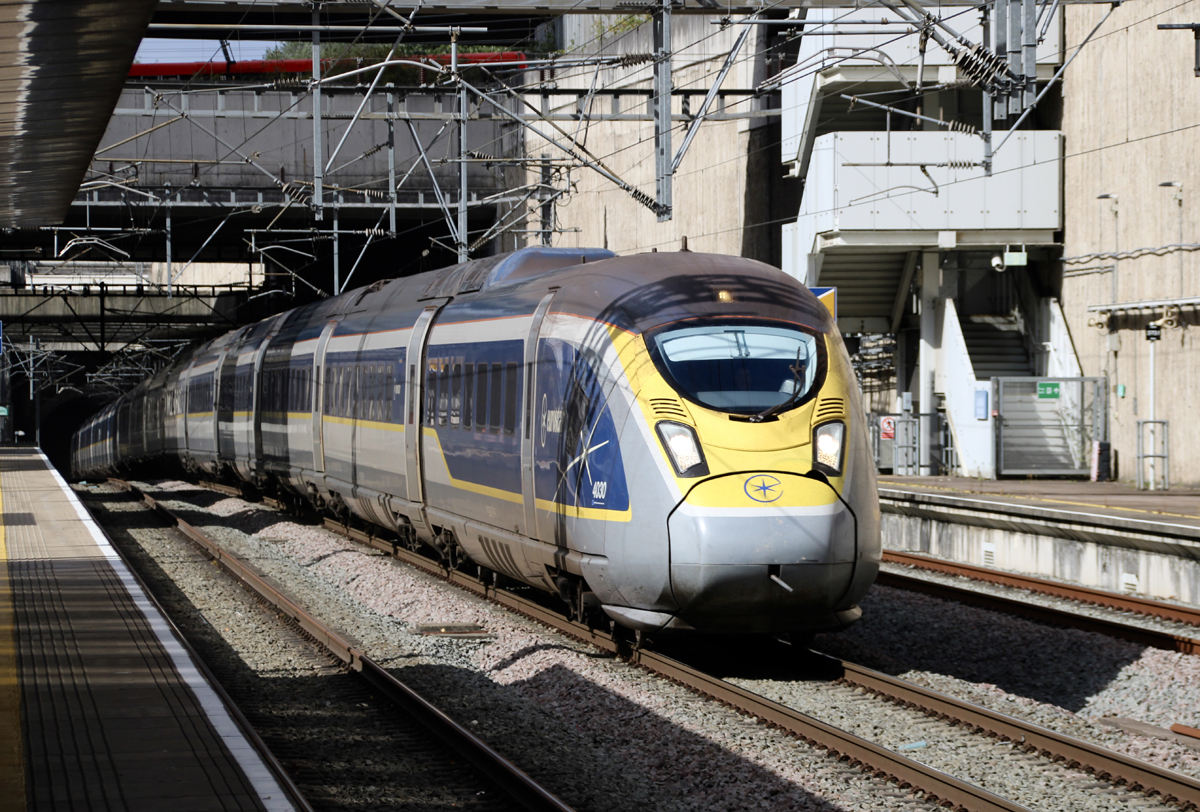
On Monday, I spent quite a bit of time at the two Stratford stations (the main station is something like the fifth busiest in London; the smaller Stratford International is somewhat misnamed, since the Eurostar service passes through but does not stop. Only local trains visit. The Eurostars flying through at speed are an impressive sight, however — and not the easiest to photograph, given their speed (up to 186 mph). I also spent a little time exploring the Elizabeth line, the monumental new rail line that opened three years ago and by all accounts has had a profound positive impact on London rail travel. But that’s another story for another day.
At the moment, it’s about time to board my train.






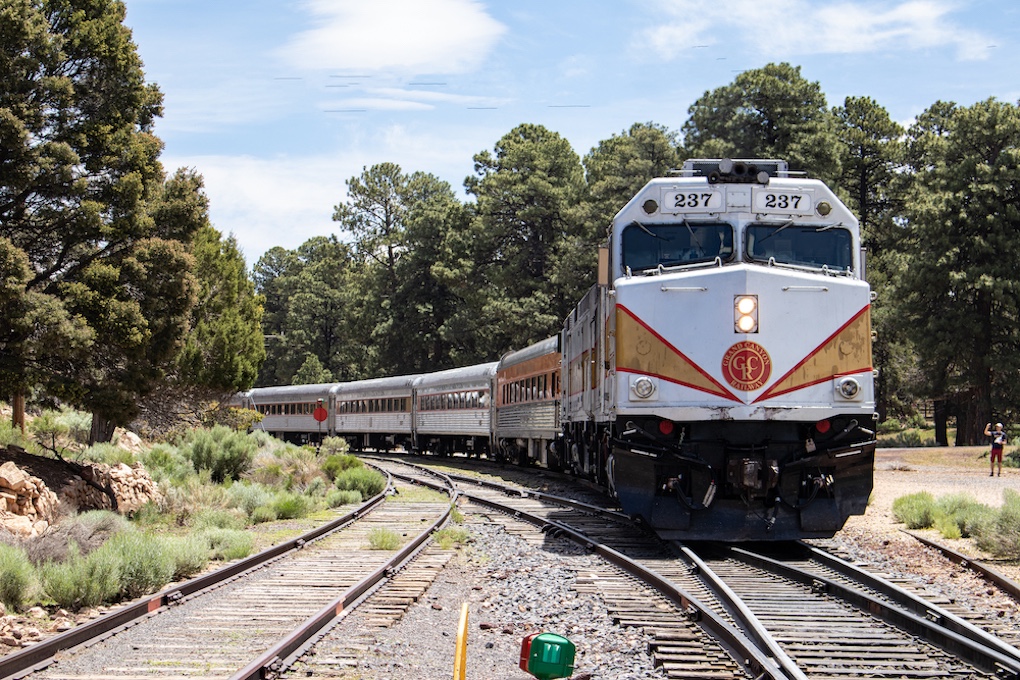
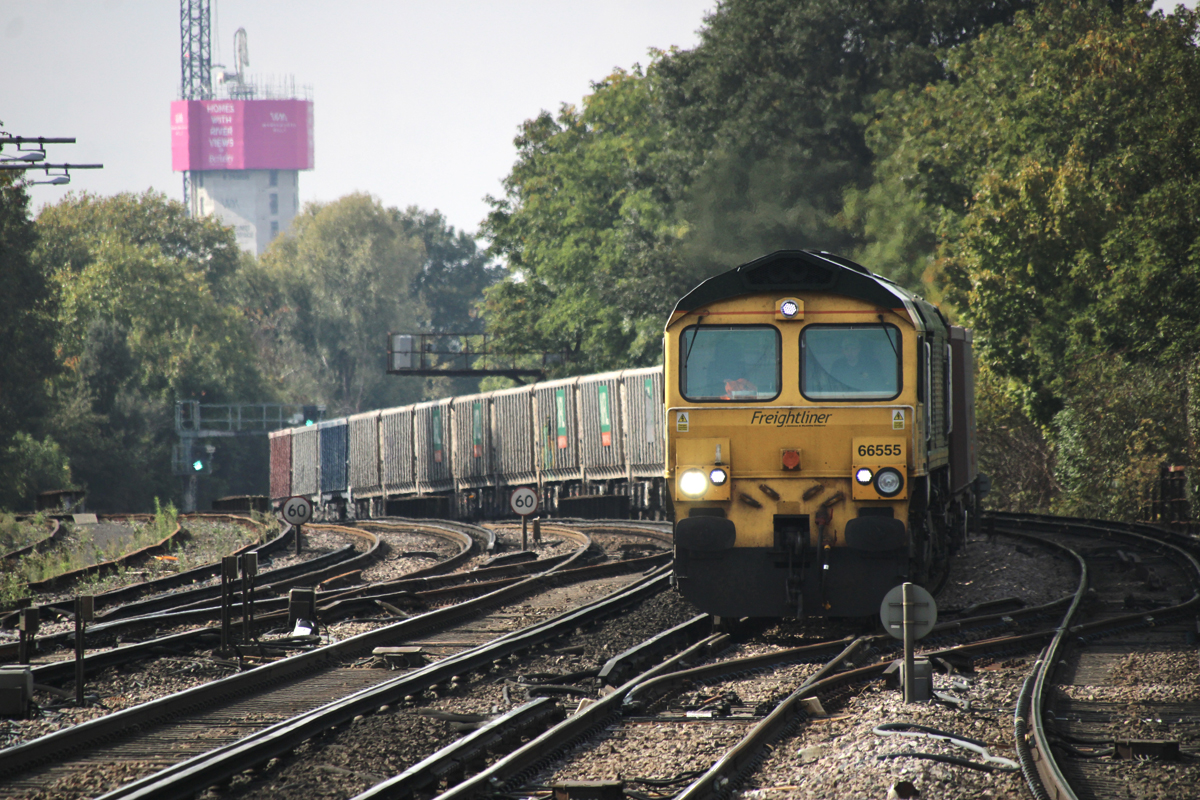
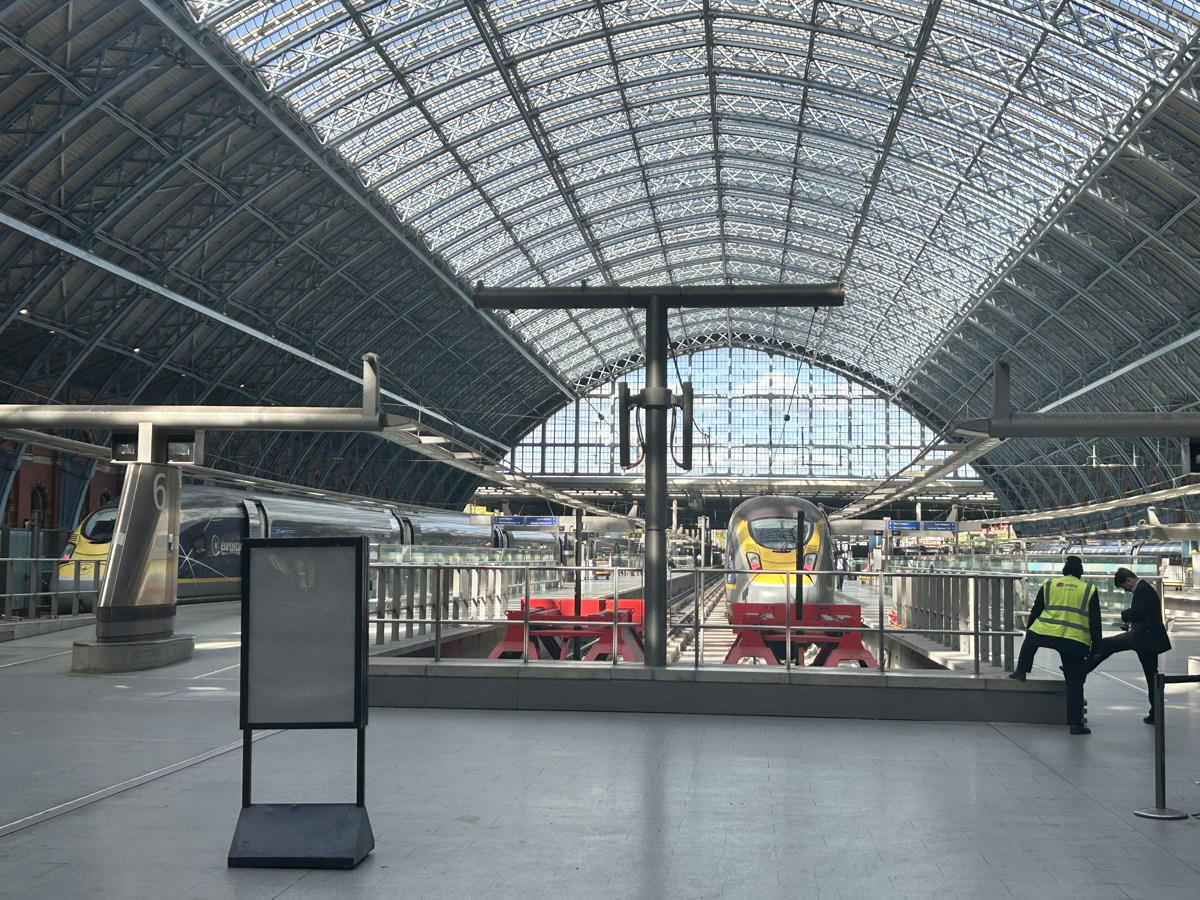
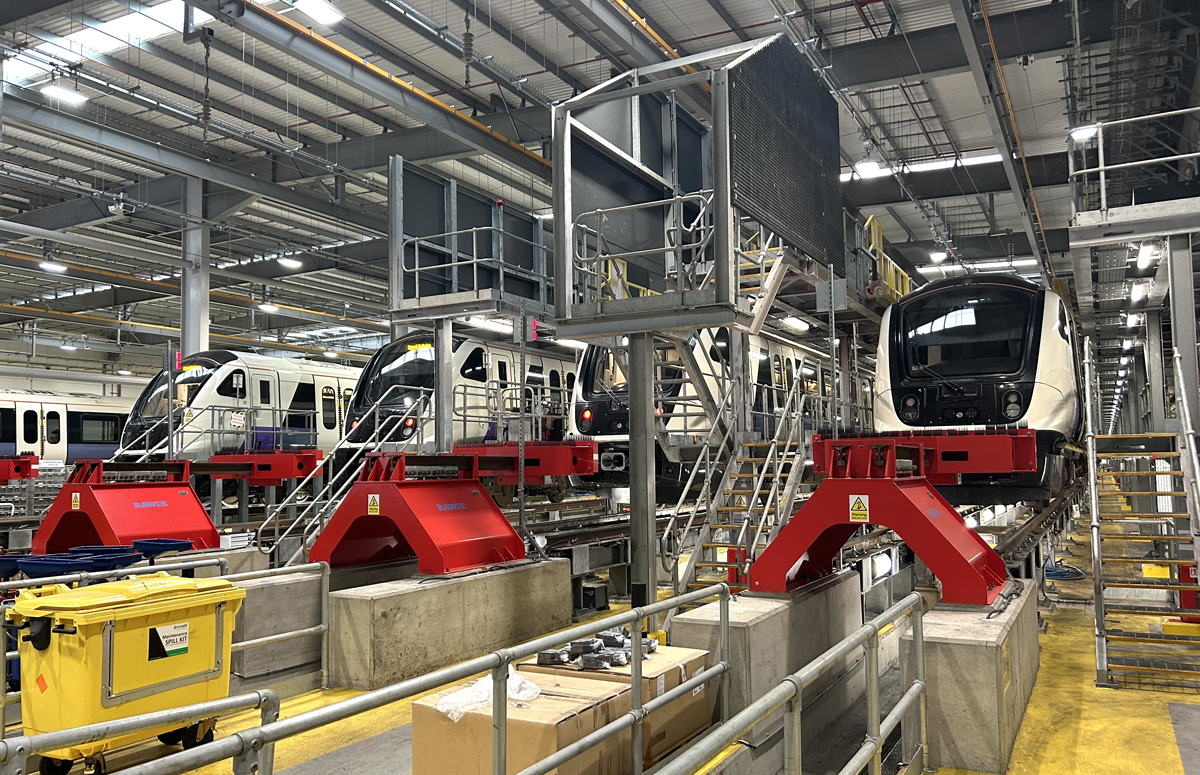
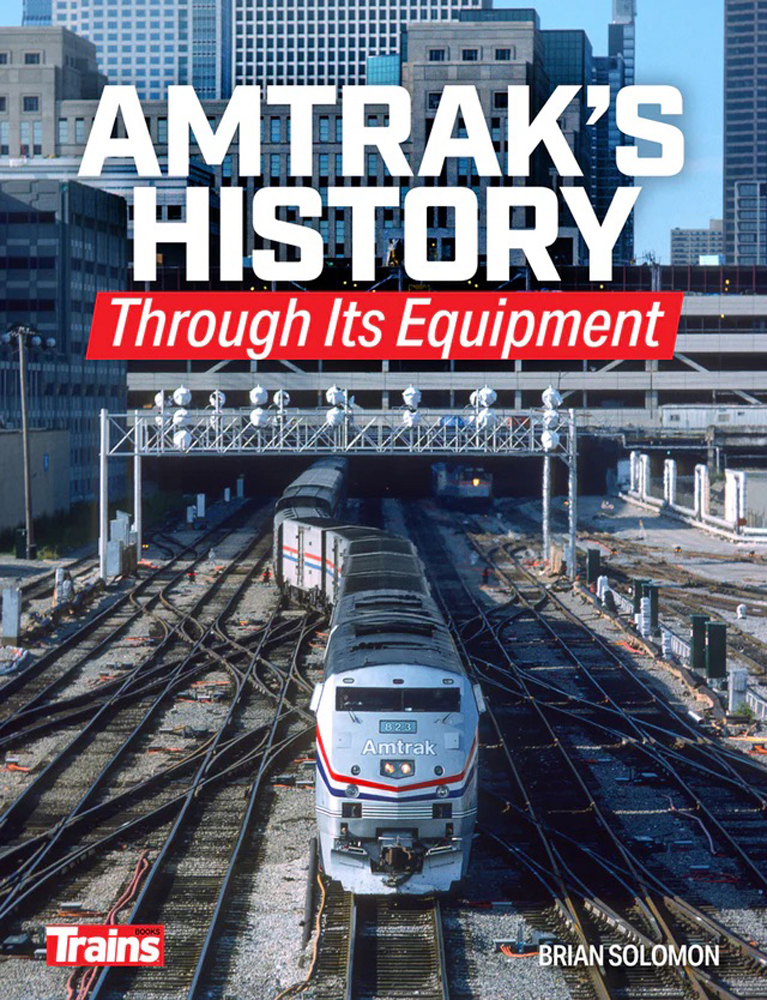
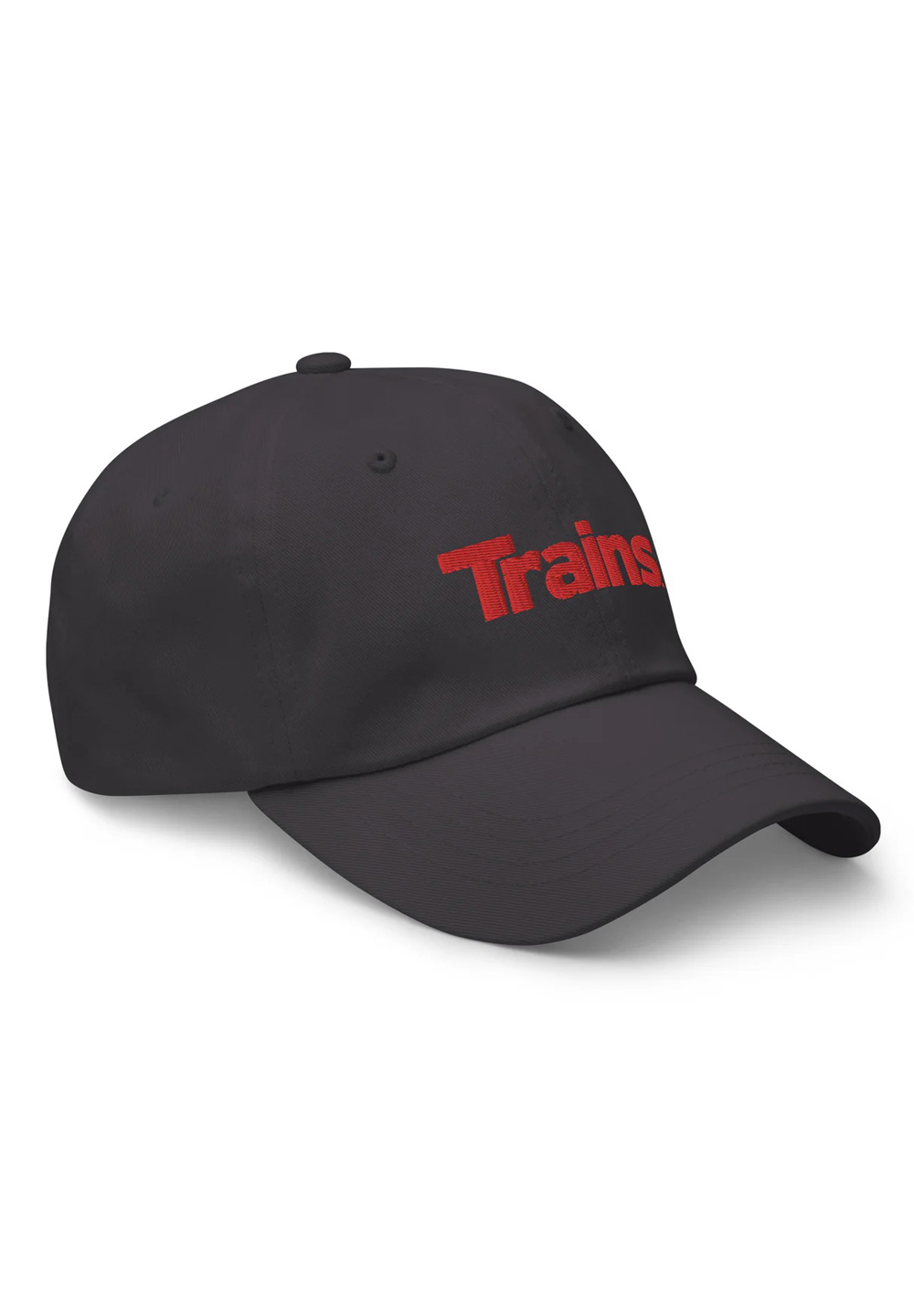
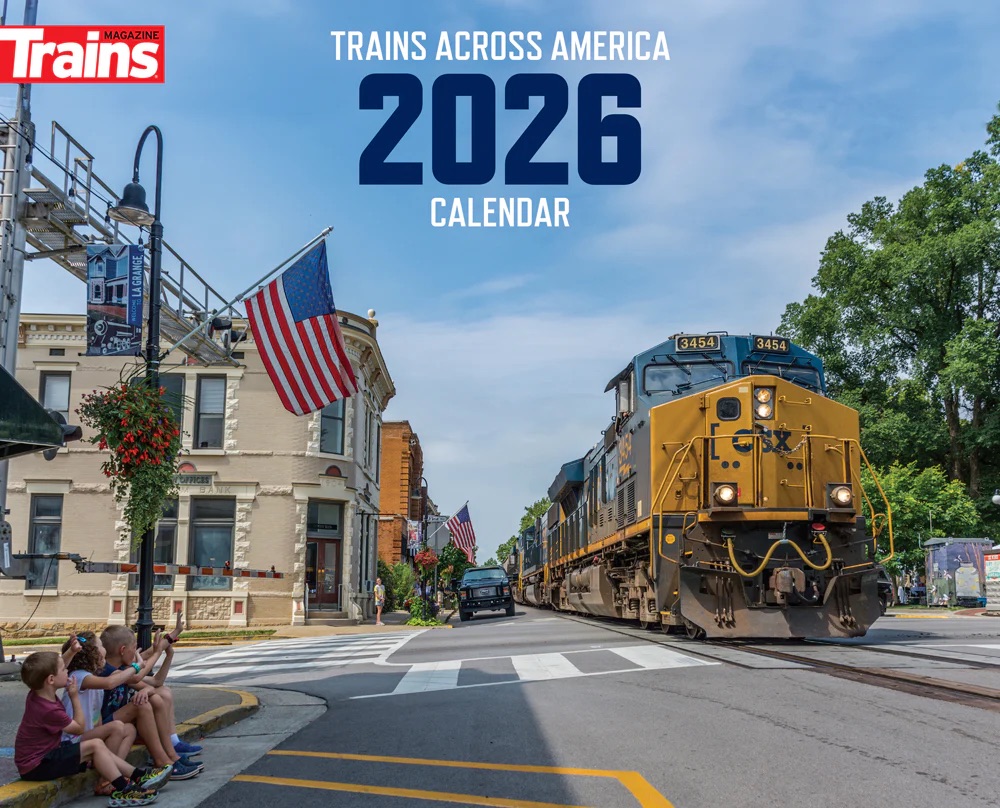
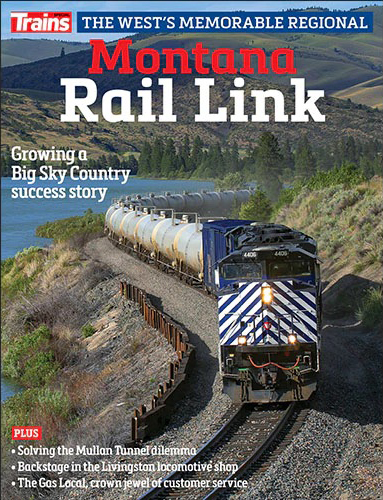
My railpass was England only, so I never got north of the border into Scotland. What did I like about English trains? Pretty much everything and a whole lot more than that in addition. If I had to name one thing I liked most is that in two weeks I never once looked at a timetable. You just go to the station and wait for the next train. It will come very soon and get you where you’re going. Well, one train did not get me where I was going – on a long-haul trip from York to Reading, the train barely made it to Birmingham and crapped out there. I had to wait longer than I wanted to for a Reading train, even though Birmingham to Reading forms part of one of England’s heaviest corridors.
For the steam or nostalgia fans there are heritage railways all over England. Even I looked one up to ride, though I’m no lover of steam.
I joined a bunch of railfans (“train spotters” in UK) at the rail museum at York, on a platform overlooking the York station’s north throat. They were as interested in what I could tell them about North American railroads as I was with theirs.
Oh, one last comment. The East Anglia trains reminded me of the Long Island Railroad in the 1960’s.
Well enjoy the heck out of your time there, green with envy as England surely has the rails to enjoy not to mention the cider. Looking forward to your articles.